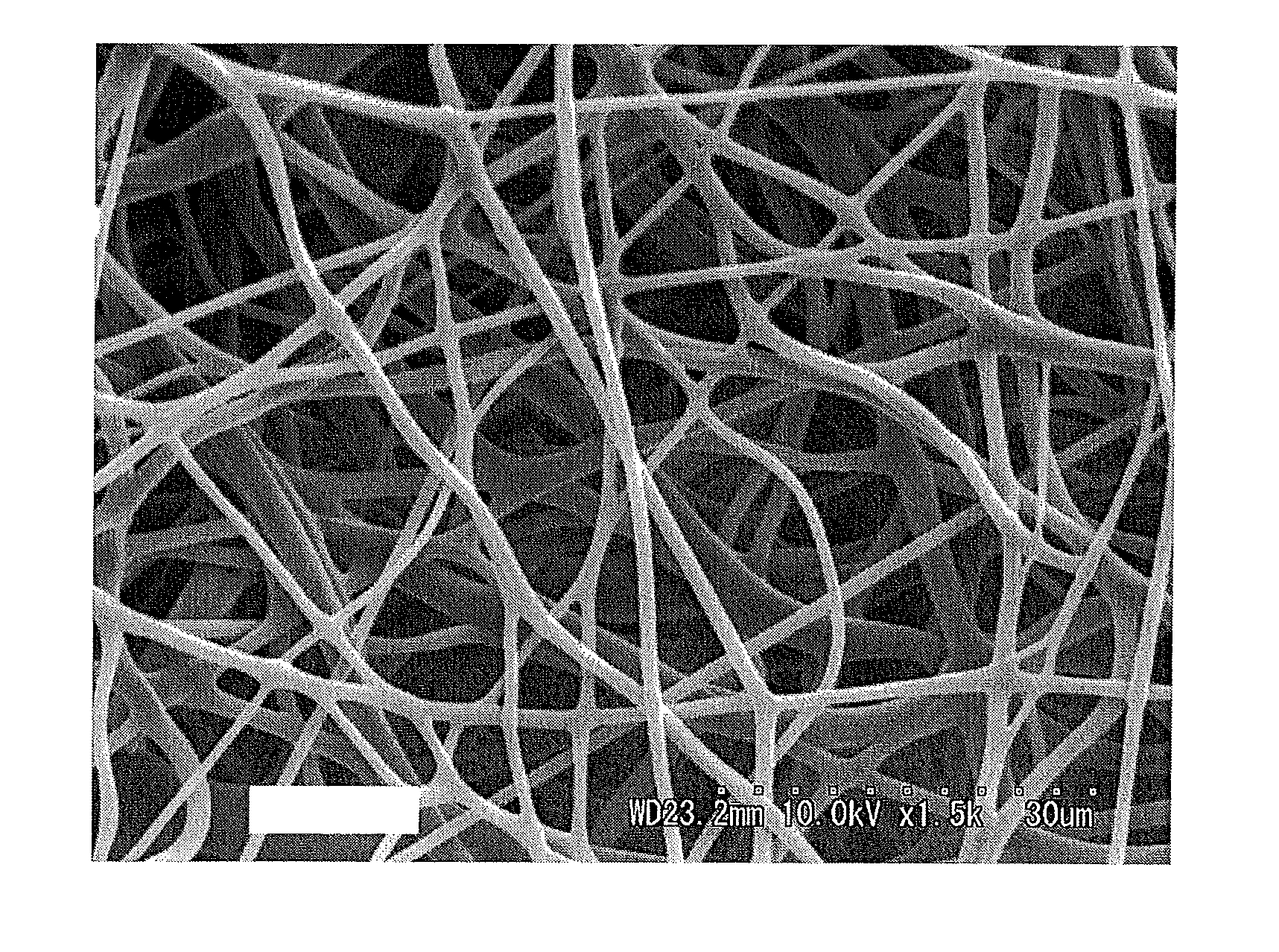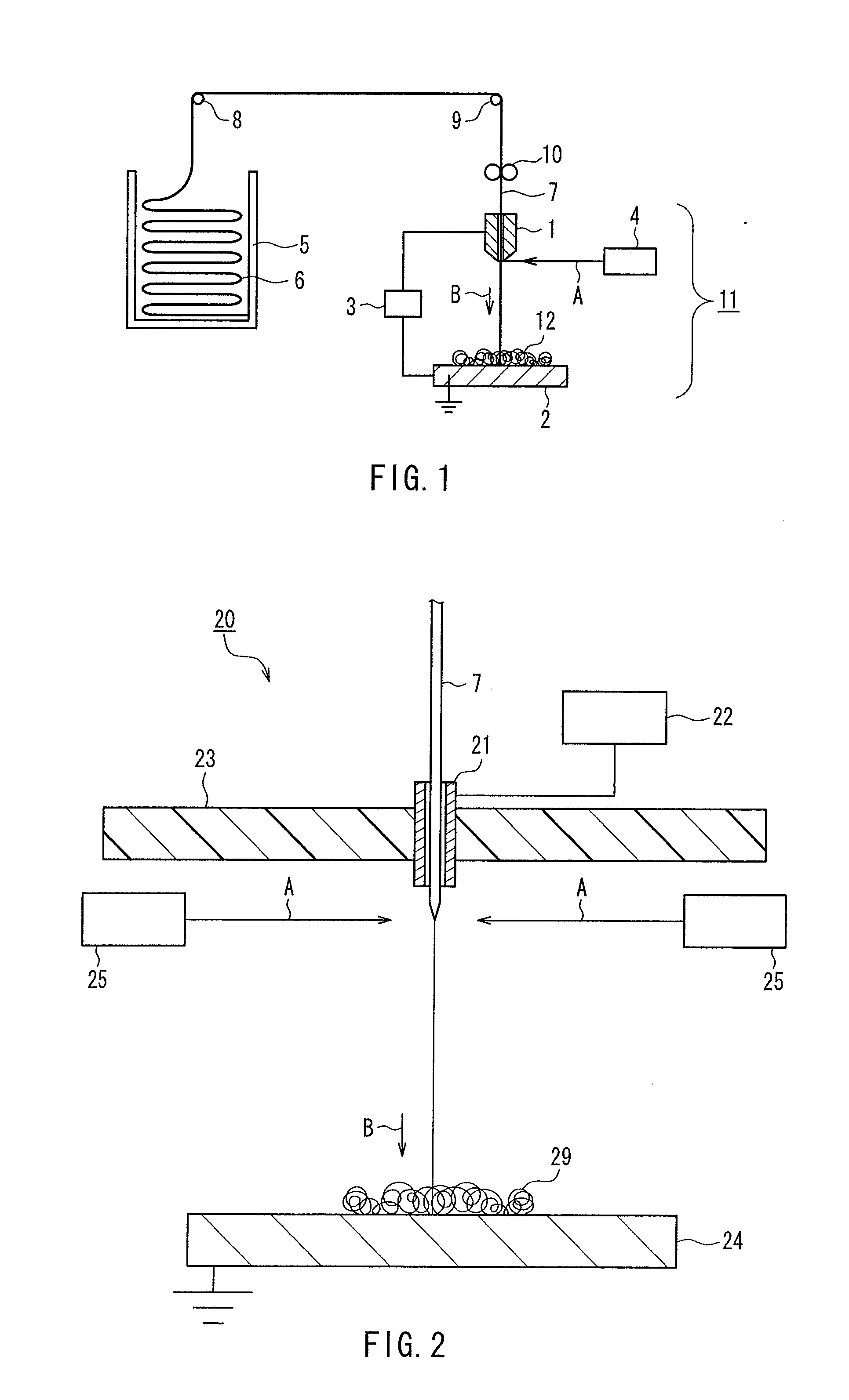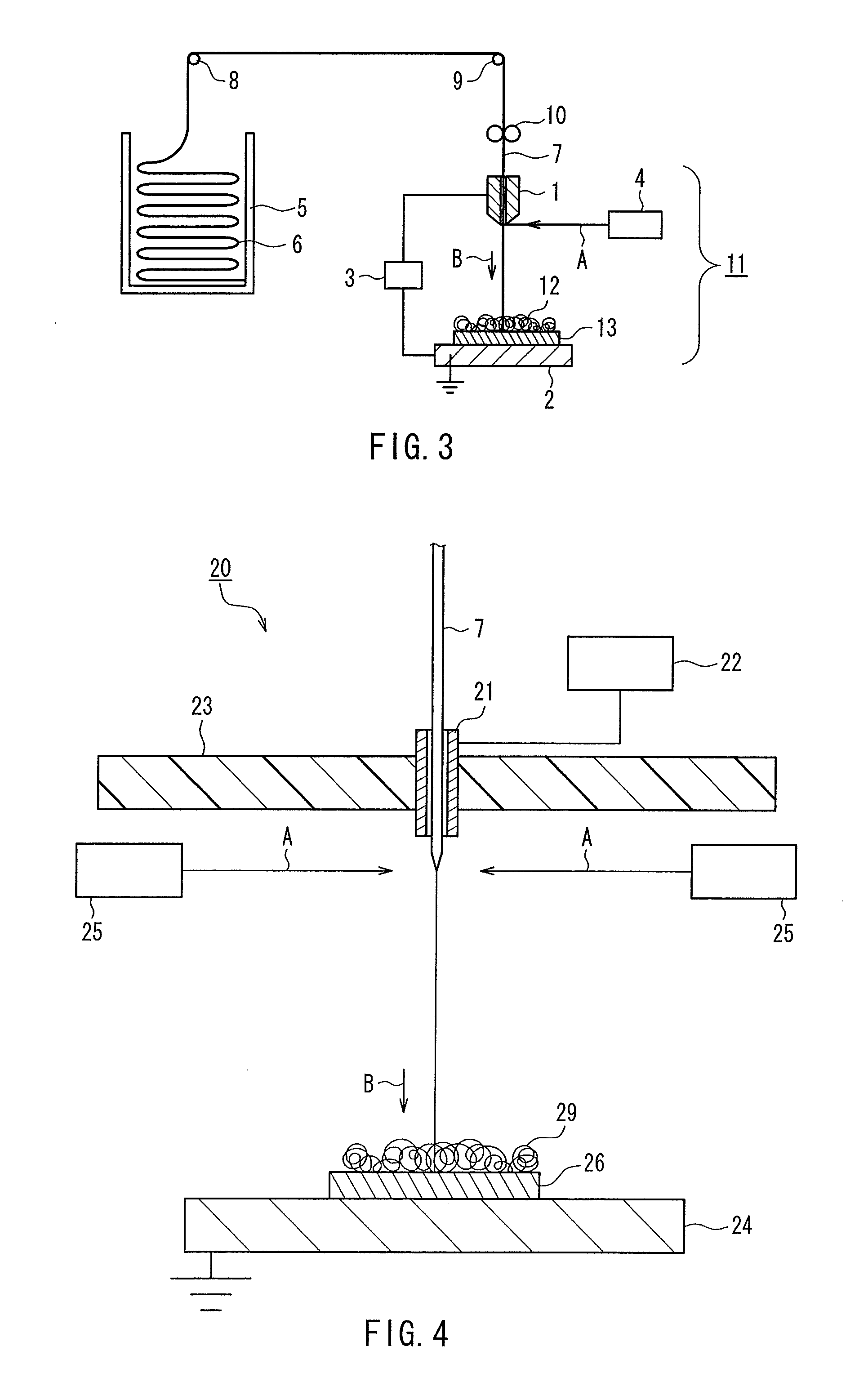Fiber assembly, composite of electro conductive substrate and fiber assembly, and production methods thereof
a technology of electro conductive substrate and fiber assembly, which is applied in the direction of sustainable manufacturing/processing, cell components, melting methods, etc., can solve the problems of affecting the production efficiency of the product, affecting the quality of the product, so as to achieve the effect of reducing the cost of production
- Summary
- Abstract
- Description
- Claims
- Application Information
AI Technical Summary
Benefits of technology
Problems solved by technology
Method used
Image
Examples
examples
[0099]Hereinafter, the present invention will be described in further detail by way of examples. It should be noted that the present invention is not limited to the following examples.
[0100]The following measurement methods were used in examples and comparative examples.
[0101]Method for Measuring Fiber Diameter
[0102]A fiber side face was inspected visually using a scanning electron microscope (SEM, S-3500N (trade name) manufactured by Hitachi, Ltd., magnification: 1500 times), and an average value was determined from the measurement results of randomly selected 30 monofilaments.
[0103]Mass Per Unit Area
[0104]Mass per unit area was measured according to JIS L 1906 (2000).
[0105]Thermal Shrinkage
[0106]In accordance with JIS L 1906 5.9.1, the temperature within the apparatus was set to 100° C., and thermal shrinkage in the lengthwise direction of the composite fiber was determined using a non-woven fabric test piece having a width of 20 cm and a length of 20 cm.
[0107]Tensile Strength
[010...
production examples 1 to 8
[0139]Table 1 below shows the island components or core components (first components) and the sea components or sheath components (second components) of source composite fibers used to produce ultrafine composite fibers of Production Examples 1 to 8, the proportion between the first component and the second component, the cross-sectional structure, the fiber diameter of a single monofilament, the total number of fibers, and the spinning flow rate. Ultrafine composite fibers of Production Examples 1 to 8 were obtained using the source composite fibers shown in Table 1 under the above-described spinning conditions. Note that the ultrafine composite fibers of Production Examples 1 to 5 had a cross section similar to the fiber cross sections of the source composite fibers. Table 1 also shows the fiber diameter of the ultrafine composite fibers of Production Examples 1 to 8 after spinning.
TABLE 1Source composite fiber (or source resin)Fiber diameterProductionIsland (core)Sea (sheath)Cros...
example 1
[0142]First, the ultrafine composite fiber of Production Example 1 was accumulated to obtain a fiber assembly (hereinafter referred to as a “spun non-woven fabric”). Next, the fiber assembly was heat-treated by a method using an air-through dryer at 145° C. for 30 seconds to produce a thermally-bonded non-woven fabric (hereinafter referred to as an “air-through dried non-woven fabric”), or was heat-treated by a method using a cylinder dryer at 140° C. for 30 seconds to produce a thermally-bonded non-woven fabric (hereinafter referred to as a “cylinder-dried non-woven fabric”).
[0143]Scanning electron micrographs (SEM, magnified 1500 times) of the surface of the spun non-woven fabric, the air-through dried non-woven fabric and the cylinder-dried non-woven fabric obtained in the manner described above are shown in FIGS. 9, 10 and 11, respectively.
PUM
| Property | Measurement | Unit |
|---|---|---|
| melting point | aaaaa | aaaaa |
| melting point | aaaaa | aaaaa |
| melting point | aaaaa | aaaaa |
Abstract
Description
Claims
Application Information
 Login to View More
Login to View More - R&D
- Intellectual Property
- Life Sciences
- Materials
- Tech Scout
- Unparalleled Data Quality
- Higher Quality Content
- 60% Fewer Hallucinations
Browse by: Latest US Patents, China's latest patents, Technical Efficacy Thesaurus, Application Domain, Technology Topic, Popular Technical Reports.
© 2025 PatSnap. All rights reserved.Legal|Privacy policy|Modern Slavery Act Transparency Statement|Sitemap|About US| Contact US: help@patsnap.com



